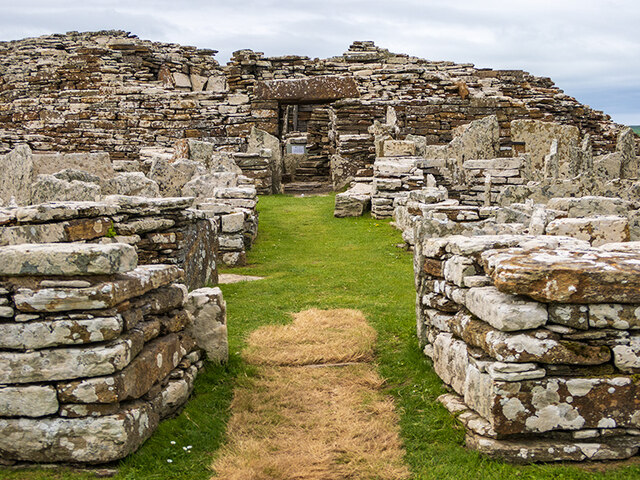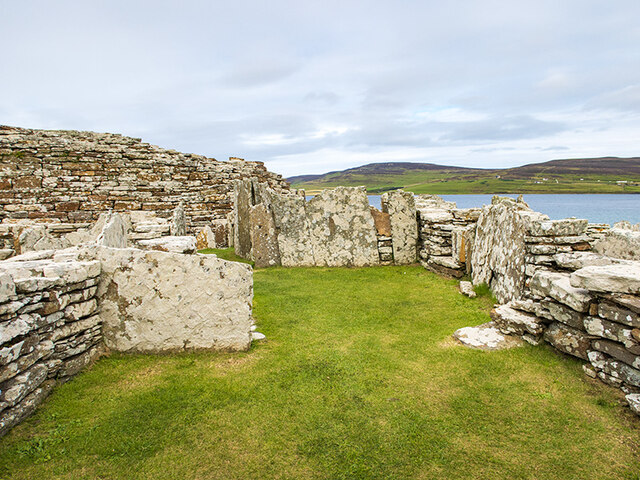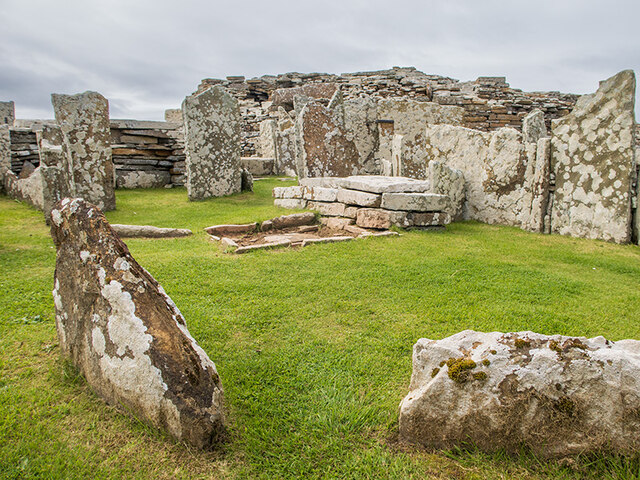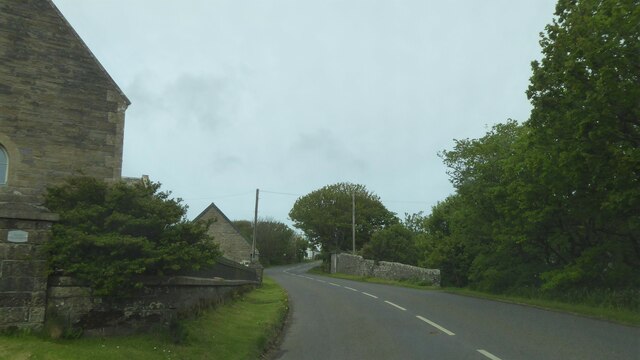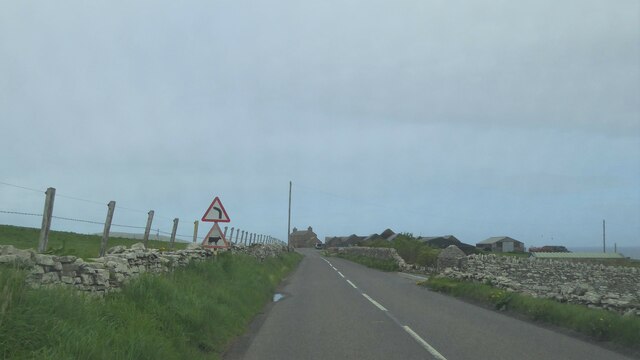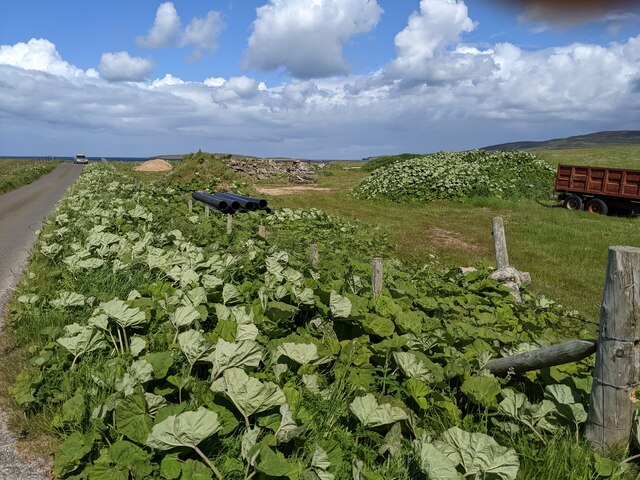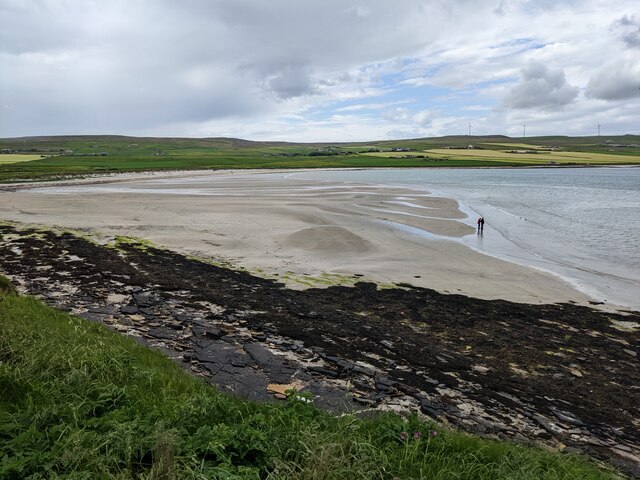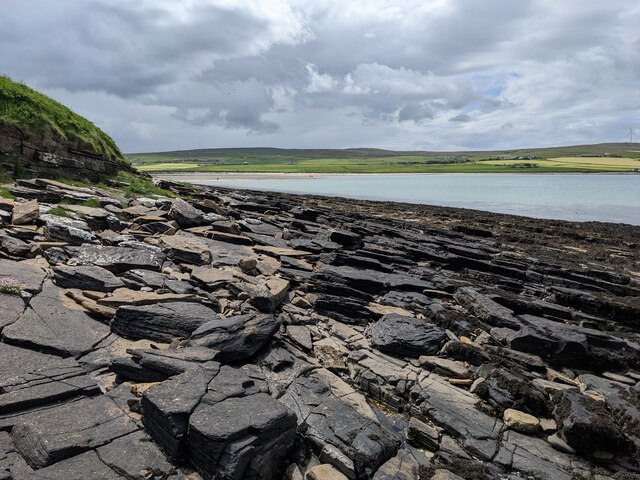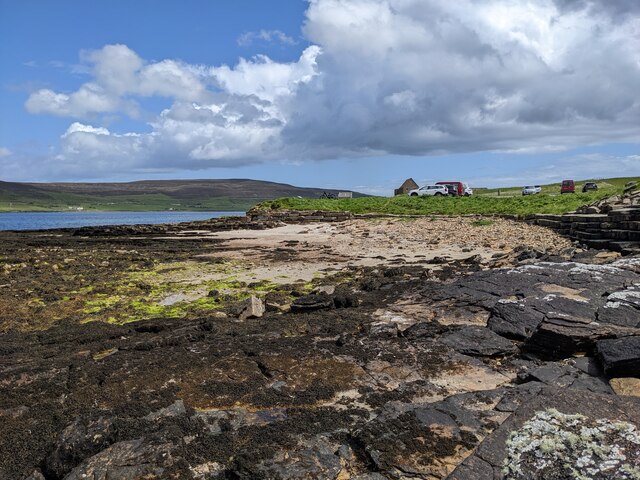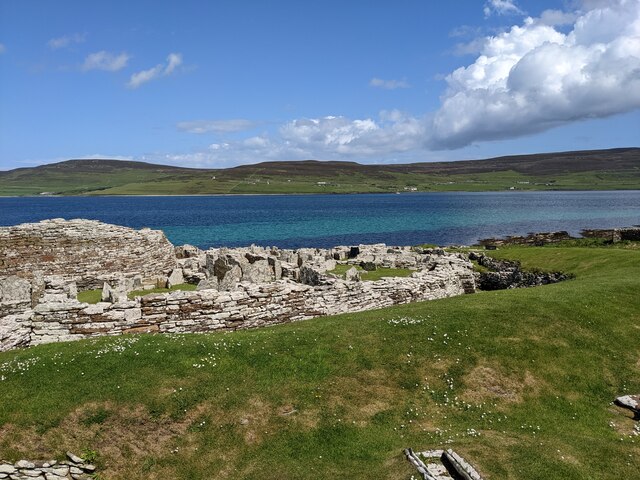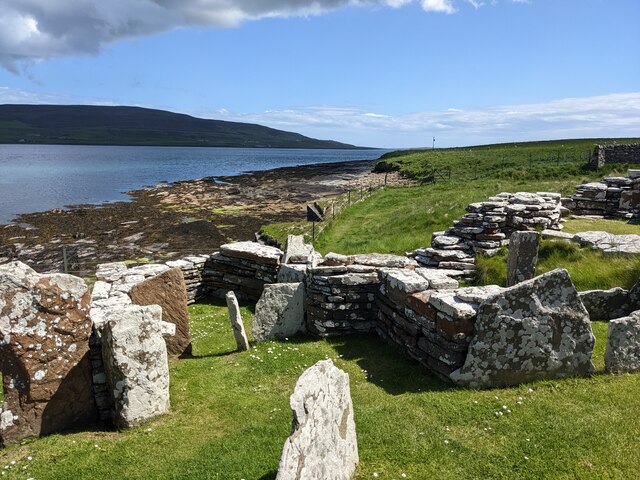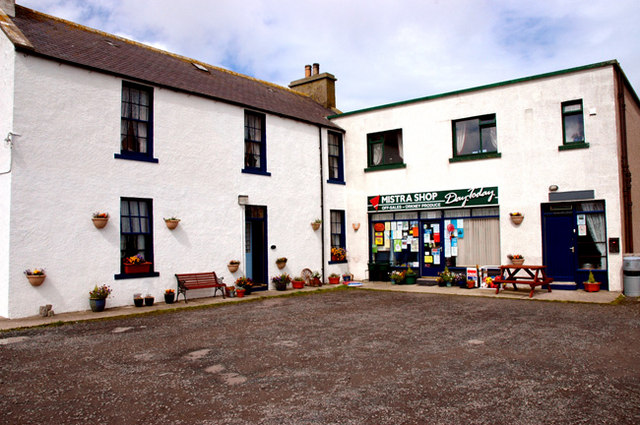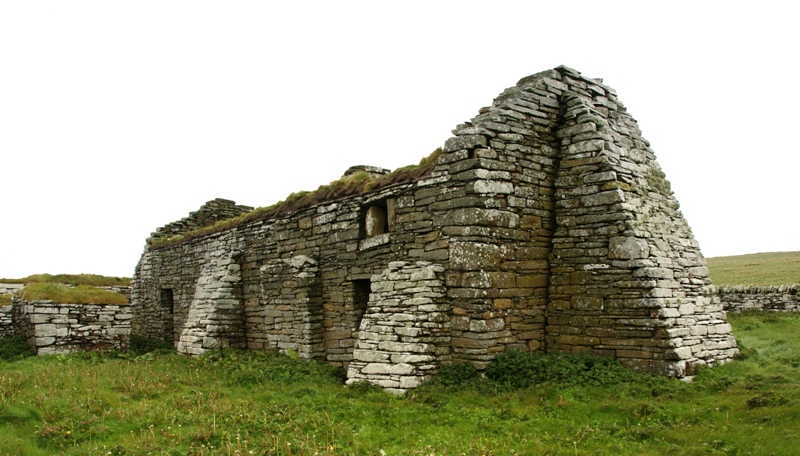Gressy Geo
Coastal Feature, Headland, Point in Orkney
Scotland
Gressy Geo
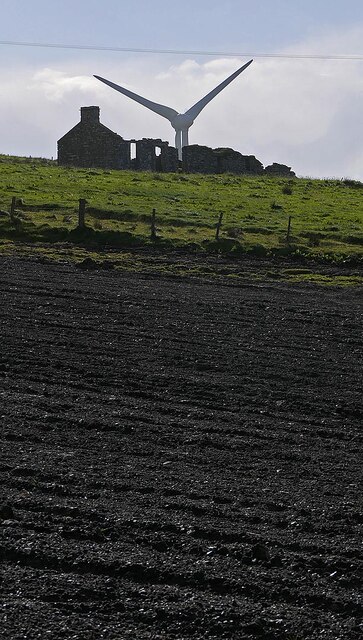
Gressy Geo is a prominent coastal feature located on the northeastern coast of the Orkney Islands, Scotland. It is a headland that juts out into the North Sea, forming a distinct point along the rugged coastline.
The headland is characterized by steep cliffs that rise sharply from the sea, offering breathtaking views of the surrounding area. These cliffs are made up of layers of sedimentary rock, with distinct bands of different colors and textures. The exposed rock formations provide valuable insights into the geological history of the region.
Gressy Geo is known for its diverse wildlife, both on land and in the sea. The surrounding waters are home to various species of fish, seals, and seabirds, making it a popular spot for birdwatching and marine life enthusiasts. The headland itself is covered in lush vegetation, including grasses, wildflowers, and shrubs, providing habitats for a variety of land-dwelling animals.
Due to its geographical location, Gressy Geo experiences strong oceanic currents and tidal movements. This, coupled with the constant erosion caused by wind and waves, has resulted in the formation of sea caves and natural arches along the headland. These geological features add to the allure of Gressy Geo, attracting visitors who are eager to explore its hidden wonders.
Overall, Gressy Geo is a captivating coastal feature, offering a blend of stunning natural beauty, rich biodiversity, and geological significance. It serves as both a recreational destination and a valuable site for scientific study, contributing to the overall allure and importance of the Orkney Islands' coastal landscape.
If you have any feedback on the listing, please let us know in the comments section below.
Gressy Geo Images
Images are sourced within 2km of 59.124022/-3.1148604 or Grid Reference HY3626. Thanks to Geograph Open Source API. All images are credited.
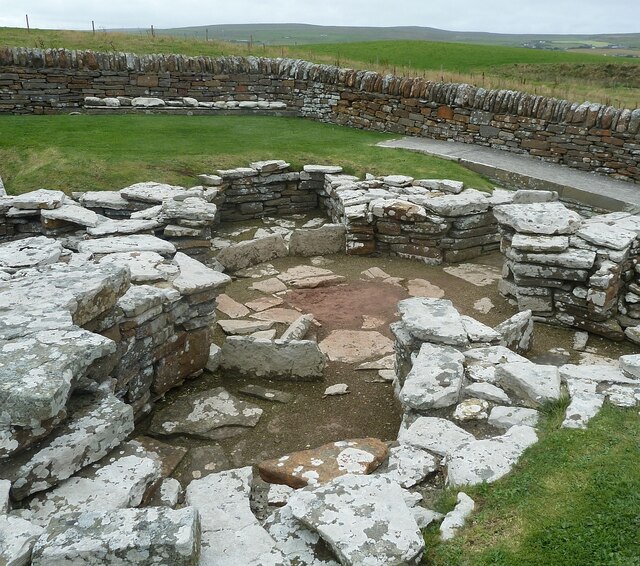
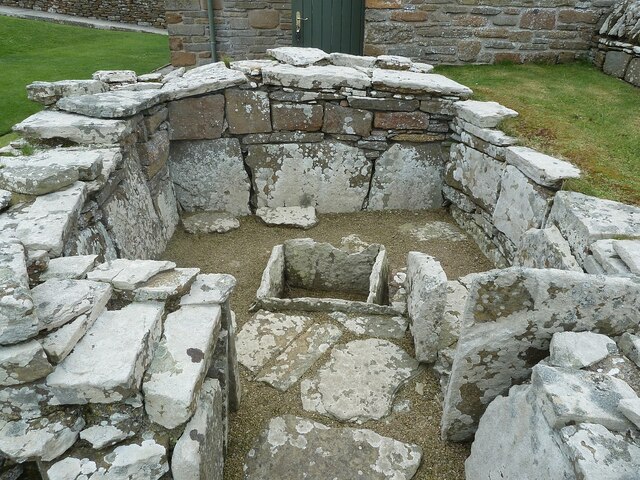
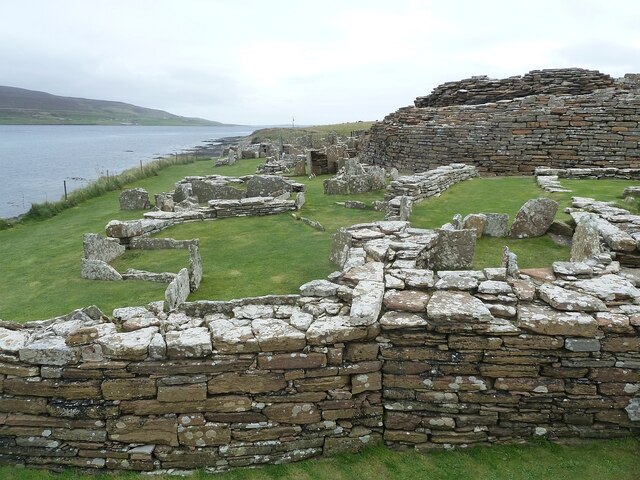
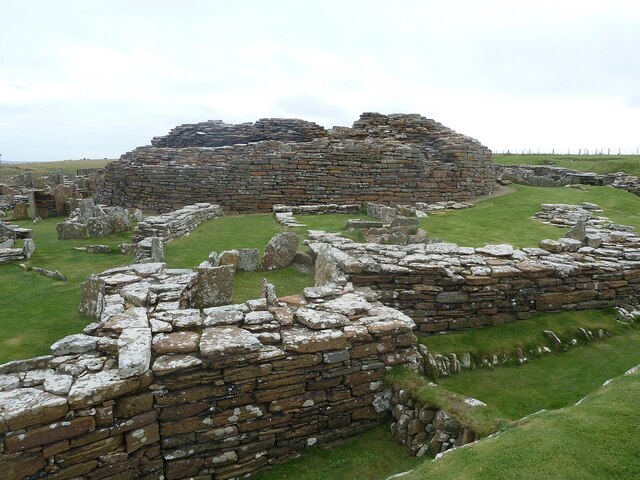
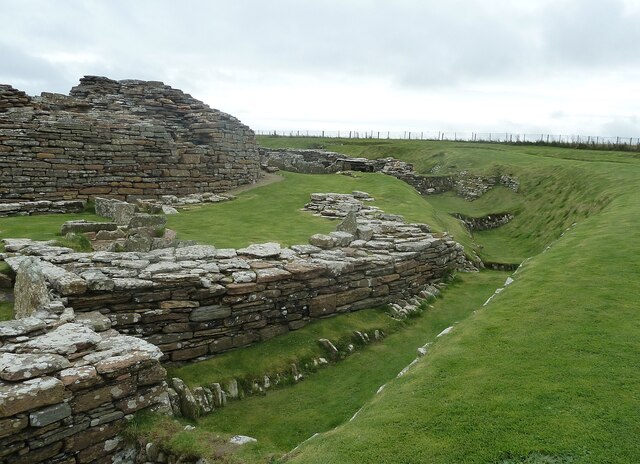
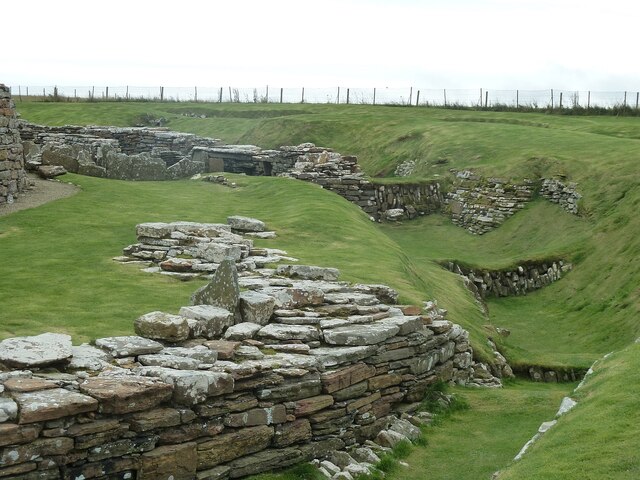
Gressy Geo is located at Grid Ref: HY3626 (Lat: 59.124022, Lng: -3.1148604)
Unitary Authority: Orkney Islands
Police Authority: Highlands and Islands
What 3 Words
///reclaimed.boat.cargo. Near Evie, Orkney Islands
Nearby Locations
Related Wikis
Aikerness Bay
Aikerness Bay is an embayment of Eynhallow Sound on the northwest coast of Mainland Orkney, Scotland. The headlands of Point of Hellia at the east and...
Evie, Orkney
Evie (pronounced ) is a parish and village on Mainland, Orkney, Scotland. The parish is located in the north-west of the Mainland, between Birsay and Rendall...
Sands of Evie
The Sands of Evie is a sandy beach landform near the village of Evie on Mainland Orkney, Scotland, protected by the Point of Hellia headland. This beach...
Point of Hellia
The Point of Hellia is a headland on the northwest coast of the Orkney Mainland, Scotland. This landform extends into the southern part of Eynhallow Sound...
Eynhallow Church
Eynhallow Church is a ruined medieval church located on the uninhabited island of Eynhallow in Orkney, Scotland. The church dates back to the 12th-century...
Broch of Gurness
The Broch of Gurness is an Iron Age broch village on the northeast coast of Mainland Orkney in Scotland overlooking Eynhallow Sound, about 15 miles north...
Eynhallow
Eynhallow (Scots: Eynhallow; Old Norse: Eyinhelga; Norn: Øjinhellig) is a small, presently uninhabited island, part of Orkney, off the north coast of mainland...
Eynhallow Sound
Eynhallow Sound is a seaway lying between Mainland Orkney and the island of Rousay in the Orkney Islands, Scotland. The tidal indraught is "scarcely felt...
Have you been to Gressy Geo?
Leave your review of Gressy Geo below (or comments, questions and feedback).
